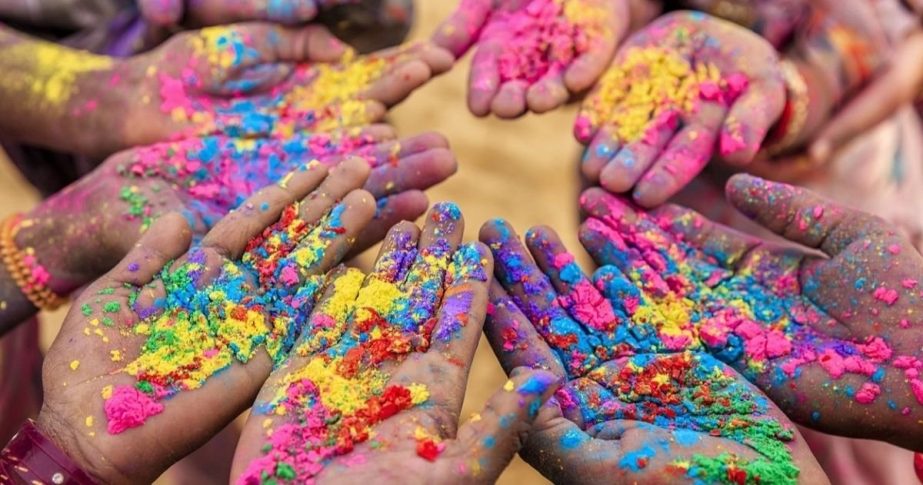
XINHUA, NEW DELHI :
The festival of colors Holi is once again here on Friday and the whole of India is immersed in the mad festive mood, as people had avoided celebrating the festival due to COVID-19 pandemic for the past two years.
Over the past four days around 2,500 new cases are registered per day as daily deaths due to the pandemic have come down to below the 100-mark. Only two days ago the country extended the vaccination drive to children in the age group of 12-14 years.
India has been one of the worst-affected countries by the pandemic as the total tally crossed the 43 million-mark on Thursday, and 516,281 people lost lives to date. Conservative estimates put the figures much higher.
Forced to follow the social distancing norms including the COVID Appropriate Behaviour (CAB), people largely kept themselves away from each other for the past two consecutive Holi festivals.
However, this year, according to sources, there is a huge jump in sales of colors even as the Indians plan to celebrate the festival with an extra vigor and fanfare.
The festival of Holi gripped the Indians for the past several days. On March 10 as the assembly election results were announced, leaders and party workers of the main ruling Bhartiya Janata Party (BJP) were seen applying colors on each other’s face while celebrating their electoral victory, especially in Uttar Pradesh, the most populous state in the country.

Holi is one of the major festivals in India since time immemorial. People throw dry colors as we well as colors mixed in water. People also enjoy throwing balloons filled with colored-water on each other.
The festival is related to the farmers’ celebration after watching their ripened crops in the month of March-April, particularly wheat, which are ready for harvesting.
In olden days, farming was the main occupation of people living in the countryside and watching their blooming wheat crops was a time of celebration, says an 80-year-old Dulichand, a farmer living in Delhi’s Hassanpur village.
“A day prior to the main festival of Holi, people do a bonfire in the evening and roast the ripened wheat plants, and eat the roasted grains thereafter. This gives them a great satisfaction. On the following day, joyous after tasting their self-grown wheat, people indulged in celebration by throwing colors on each other, in a bid to make each other’s life colorful and wishing prosperity,” added Dulichand.
Besides the farmers’ reason of rejoicing after seeing their ready-to-harvest crops, another reason behind celebrating Holi is an epic the theme of which is the victory of truth over evil.
The festival of Holi is celebrated with much fanfare and enthusiasm in the twin-towns of Mathura and Vrindavan, in Uttar Pradesh, where revellers begin indulging in celebrations around one month in advance.

